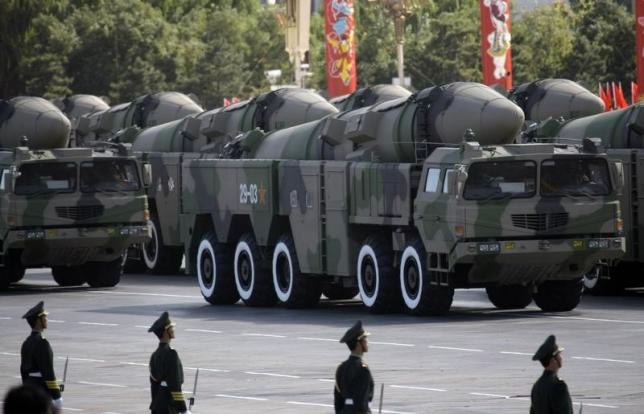
The Stockholm International Peace Research Institute (SIPRI) said military expenditure nudged up to almost $1.7 trillion last year, with the United States accounting for by far the greatest amount despite its spending dipping 2.4 per cent to $596 billion.
Budget 2016-17: India increases military spending by less than 1%
China was the second largest spender for the second year in a row with spending up 7.4 per cent to $215 billion, while Saudi Arabia passed Russia to take third place and Britain came fifth.
SIPRI said military expenditure amounted to 2.3 per cent of global gross domestic product - and 10 per cent of this would be enough to fund the global goals agreed upon by United Nations' 193 member states in September to end poverty and hunger by 2030.
"This gives some sort of perspective that can allow people to see what is the opportunity cost involved with global military spending," Sam Perlo-Freeman, head of SIPRI's military expenditure project, told the Thomson Reuters Foundation.
"This could stir up some debate although we are certainly not expecting a 10 per cent cut in military spending at all," he said. "That is all about the politics of these countries."
UN figures show an estimated 800 million people live in extreme poverty and suffer from hunger, with fragile and conflict-torn states experiencing the highest poverty rates.
SIPRI's annual military spending report showed overall expenditure increased last year in Asia, Central and Eastern Europe and for Middle East countries with data available.
China raises 2016 defence spending by 7.6 percent: budget
However spending fell in North America, Western Europe, Latin America and the Caribbean, and Africa, a continuing trend attributed partly due to the global economic crisis, falling oil prices and the withdrawal of troops from Afghanistan and Iraq.
"On the one hand, spending trends reflect the escalating conflict and tension in many parts of the world; on the other hand, they show a clear break from the oil-fueled surge in military spending of the past decade," Perlo-Freeman said.
"This volatile economic and political situation creates an uncertain picture for the years to come."
Countries that bumped up military spending in 2015 included Algeria, Azerbaijan, Russia, Saudi Arabia and Vietnam, many of which were involved in conflict or faced heightened regional tensions.
Perlo-Freeman said this was the first time SIPRI has mapped military spending to the UN's new Sustainable Development Goals but it had previously compared it to spending on health and education.
Defence tie-up: US dismisses India’s concerns on F-16 sale to Pakistan
The SIPRI military expenditure project was established in 1967 to study developments in world military expenditure.
"It is no secret that we are a peace research institute and our mission is towards promoting peace and demilitarisation, but we don't say how this should be done," he said.




1725030039-0/Untitled-design-(2)1725030039-0-165x106.webp)





1732707402-0/Untitled-design-(8)1732707402-0-270x192.webp)






COMMENTS (2)
Comments are moderated and generally will be posted if they are on-topic and not abusive.
For more information, please see our Comments FAQ